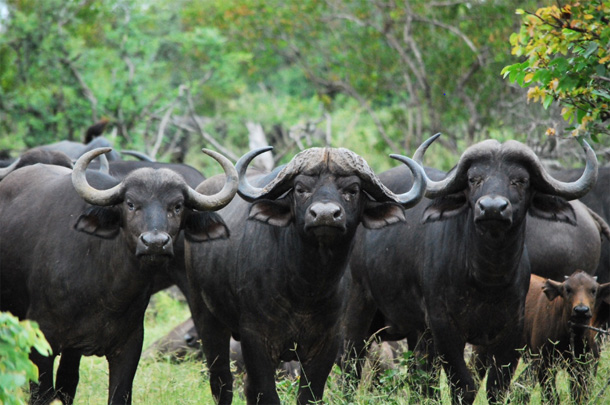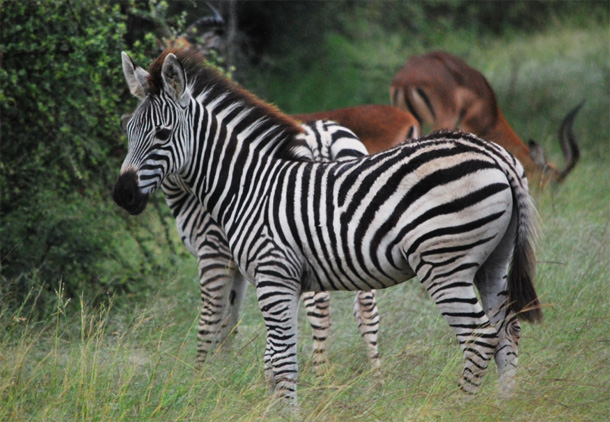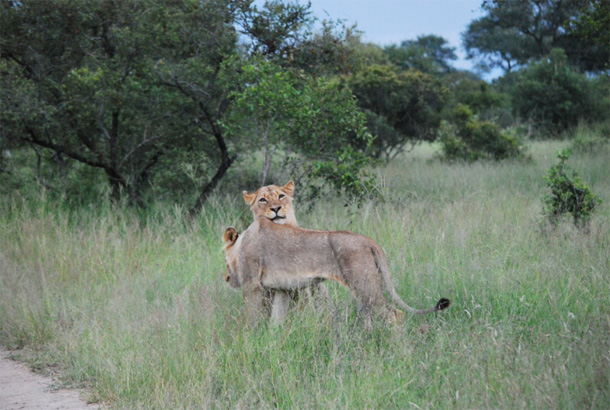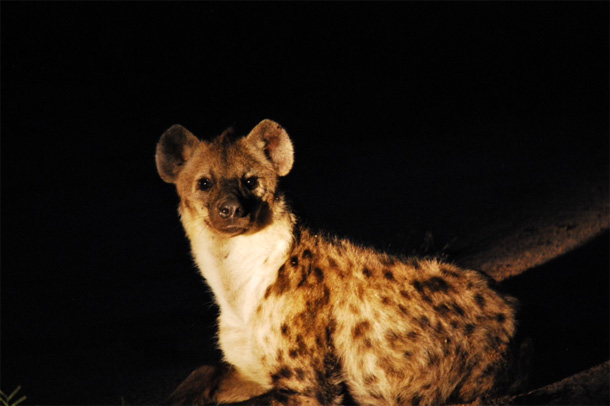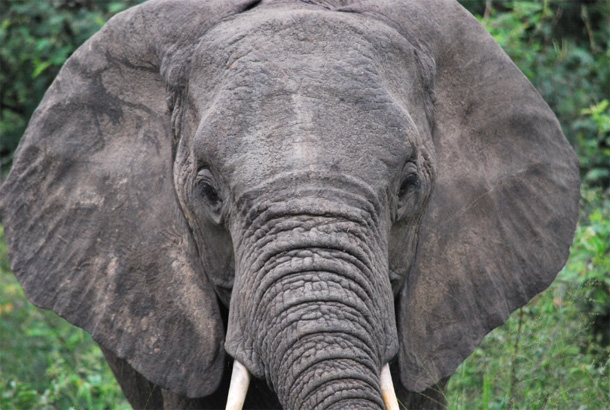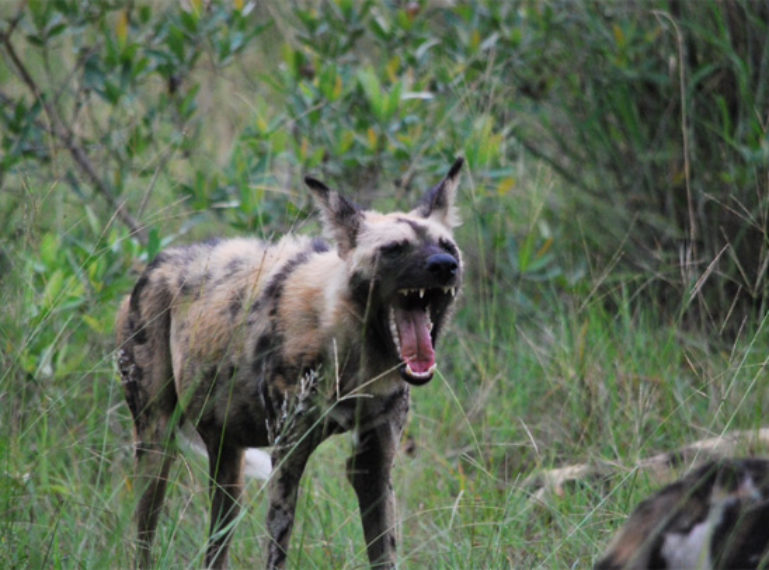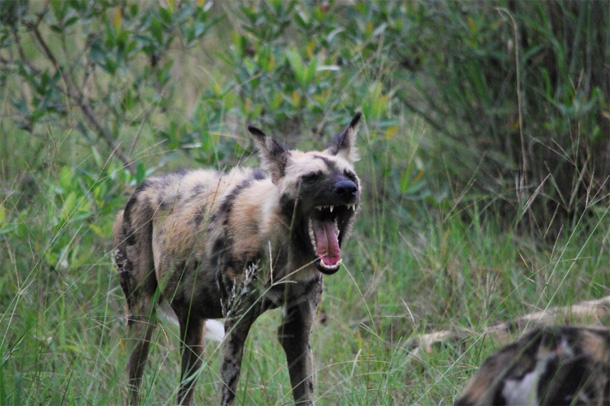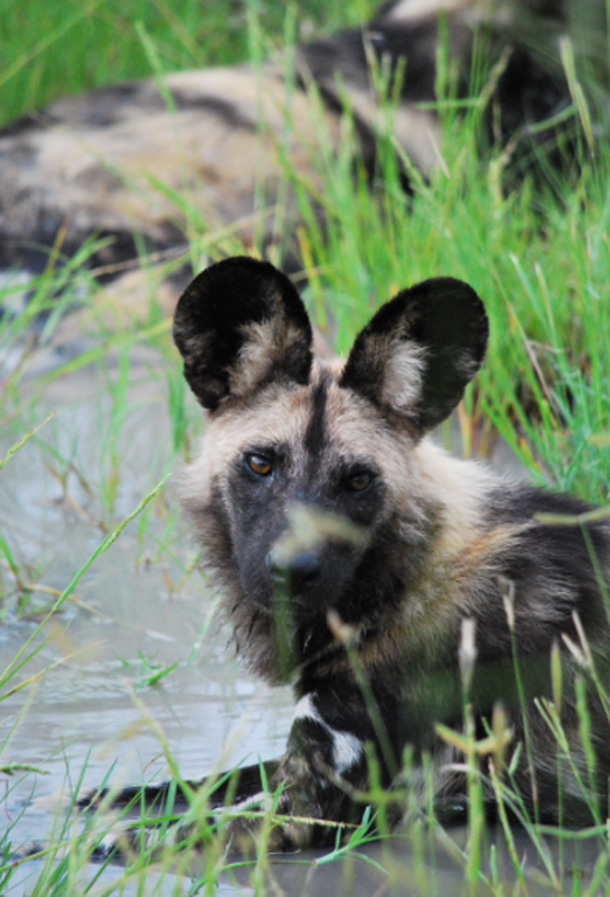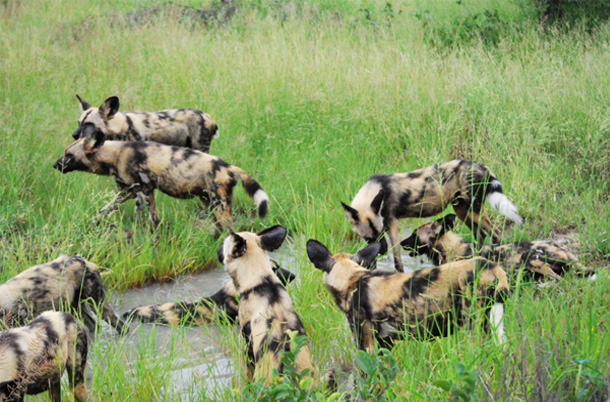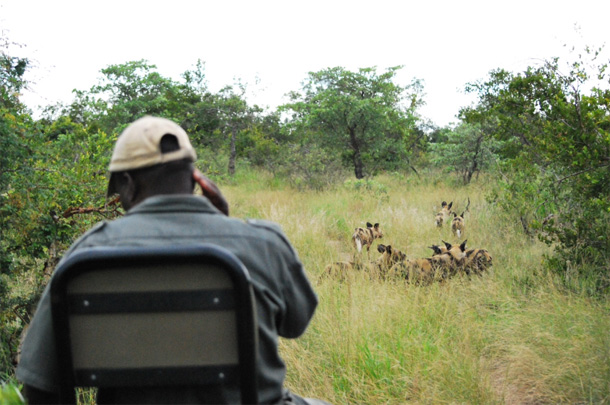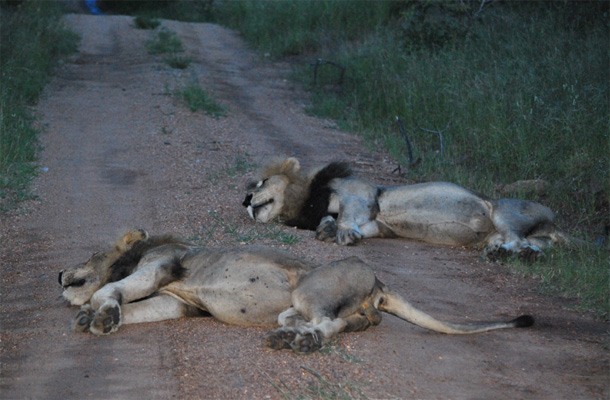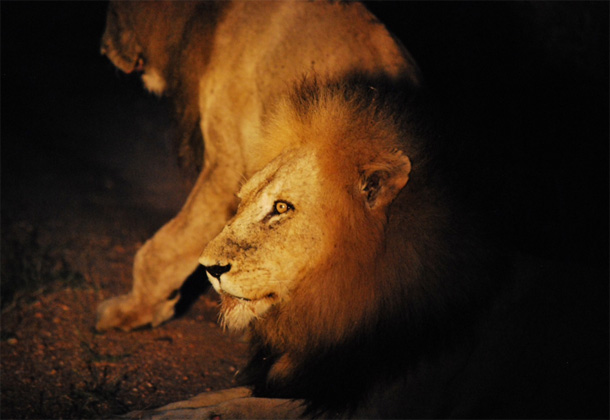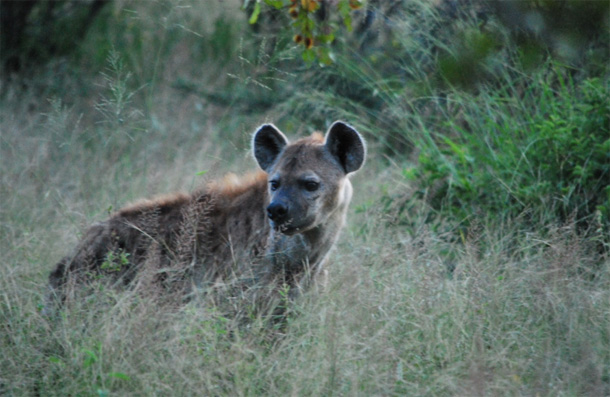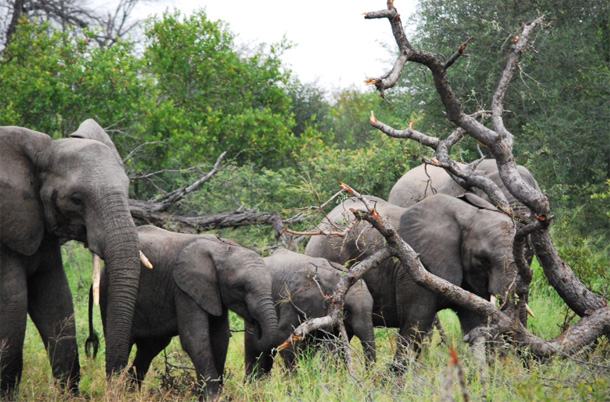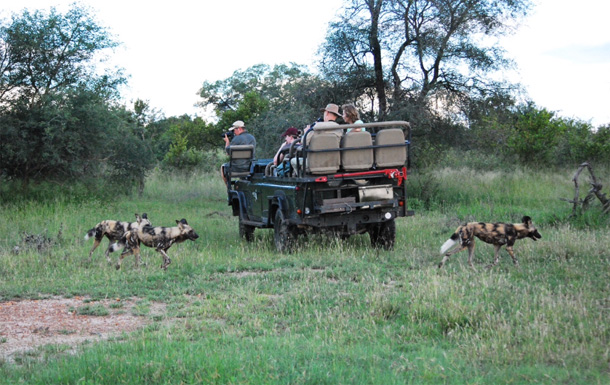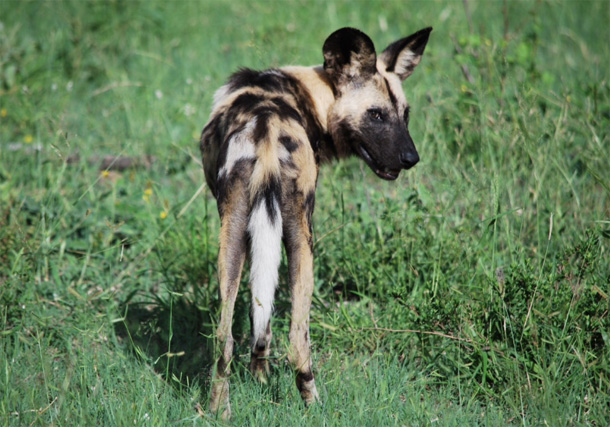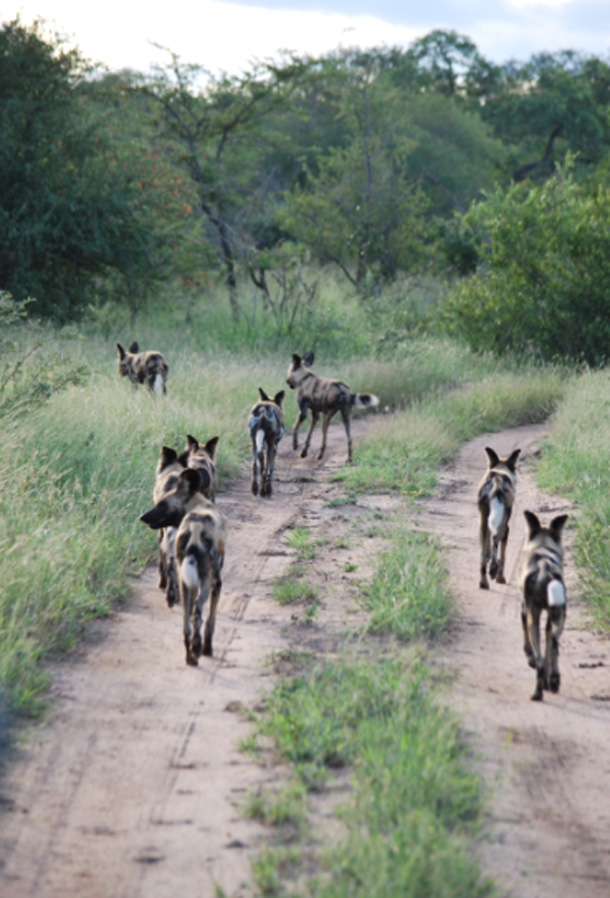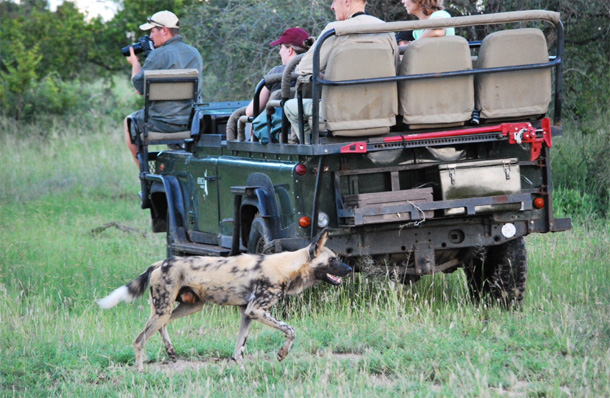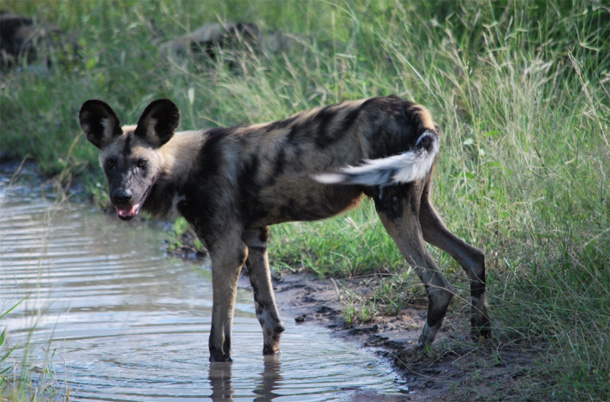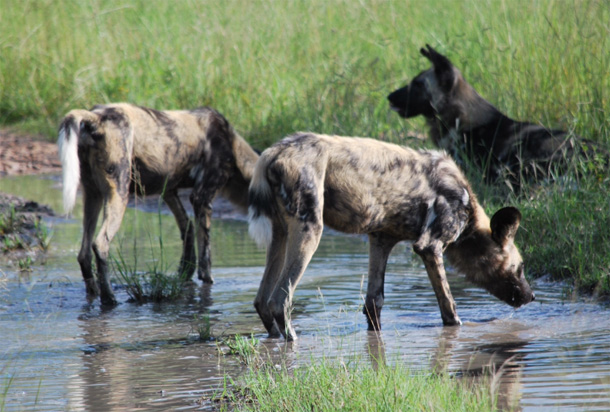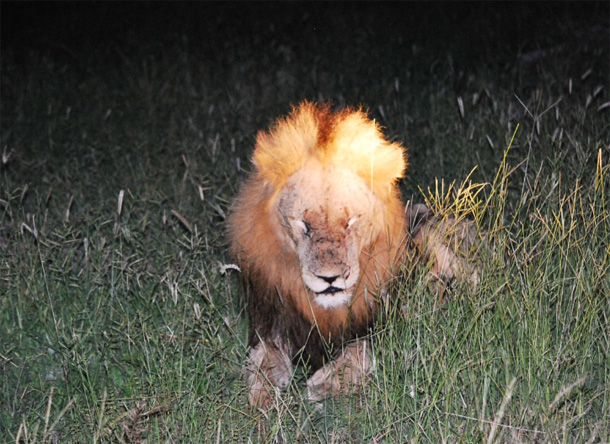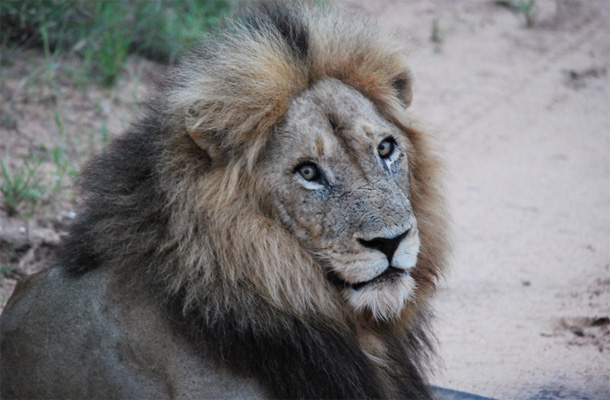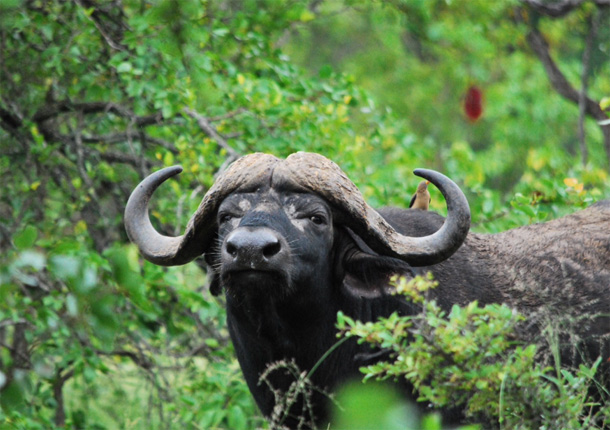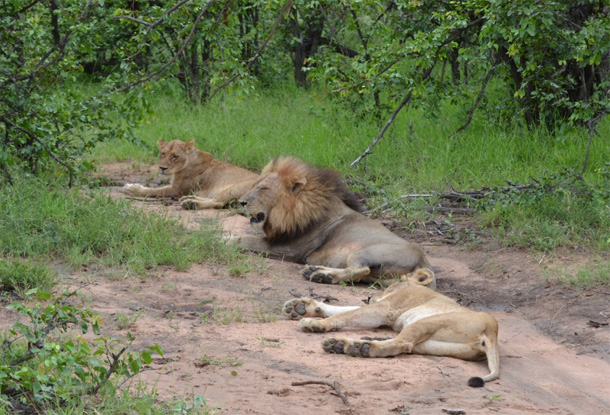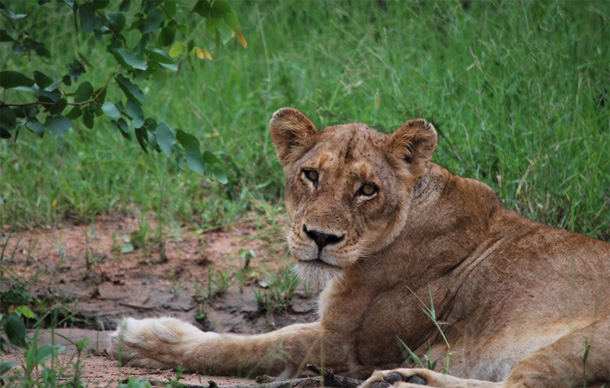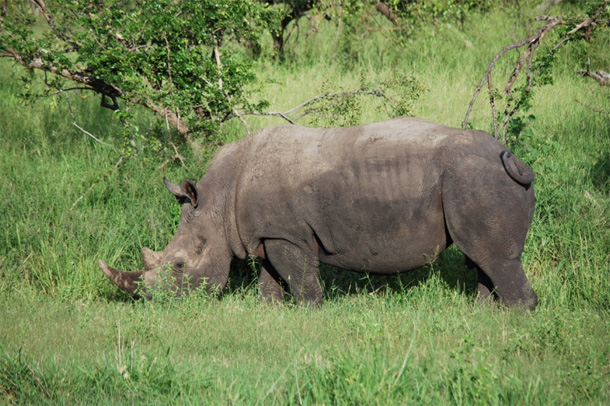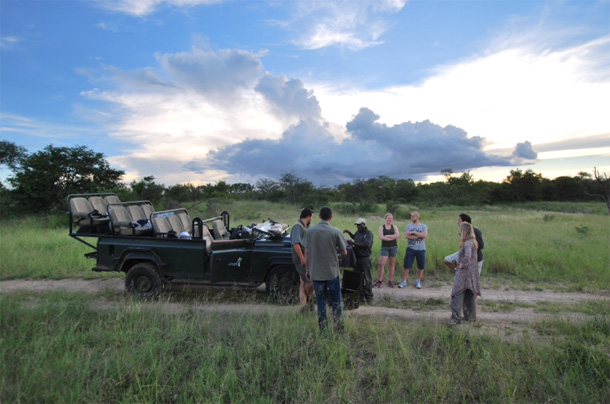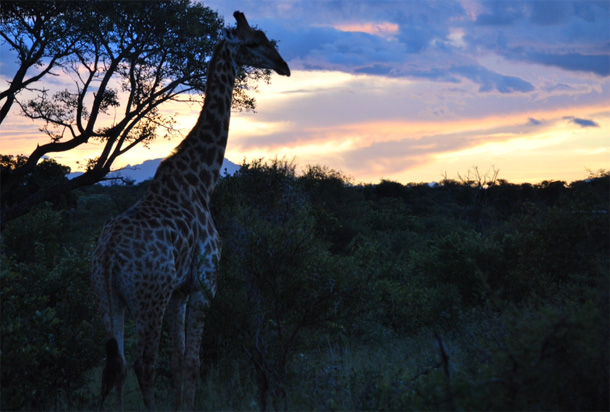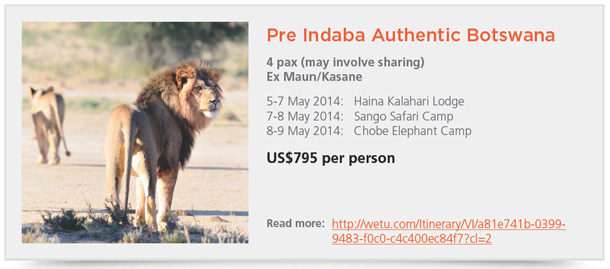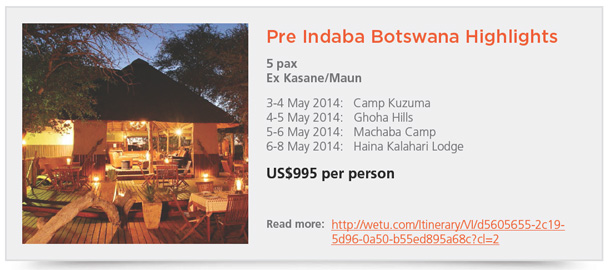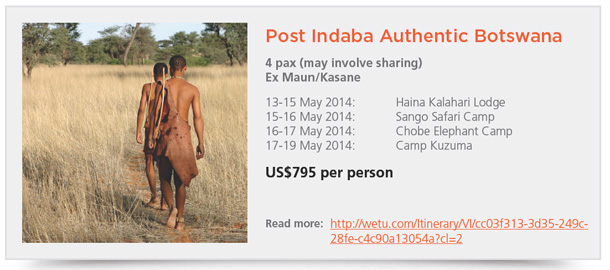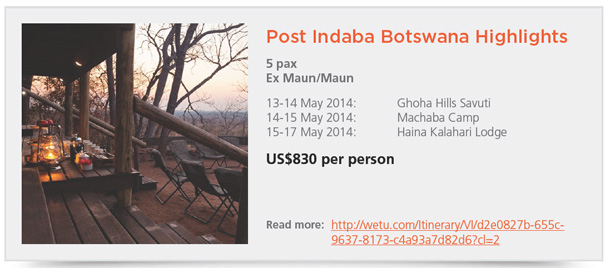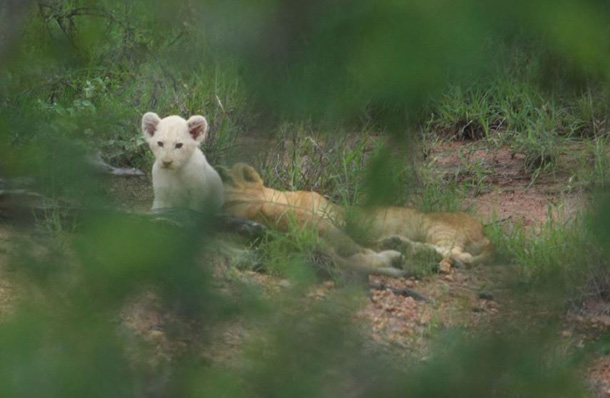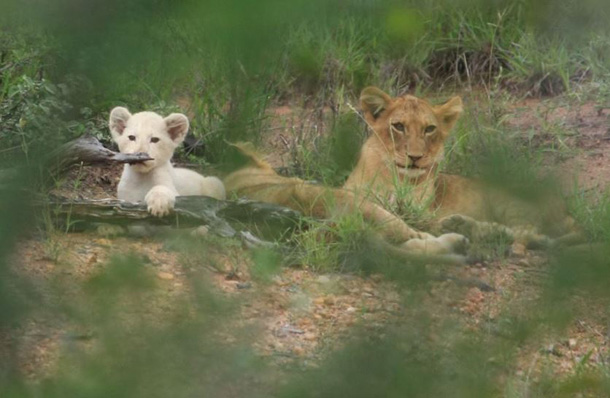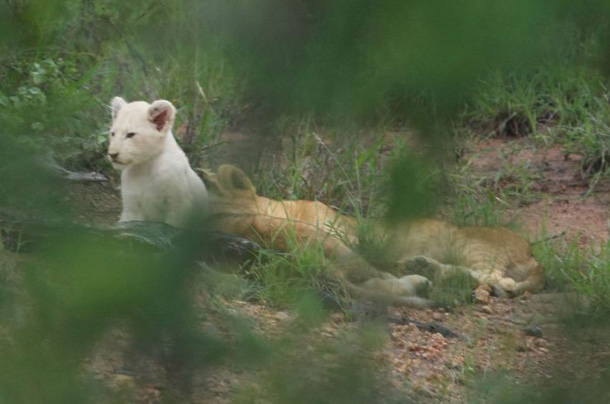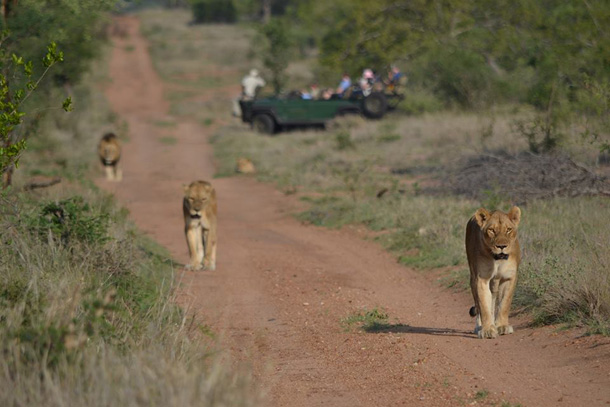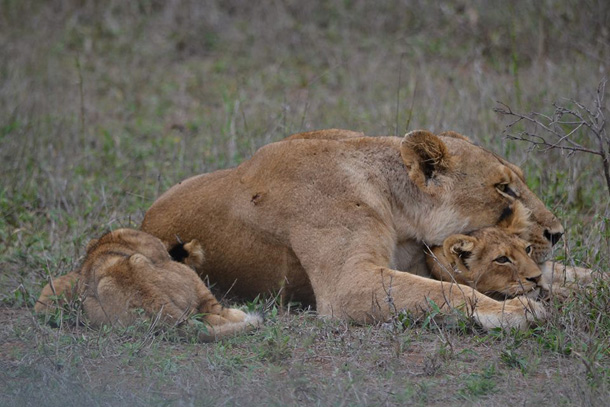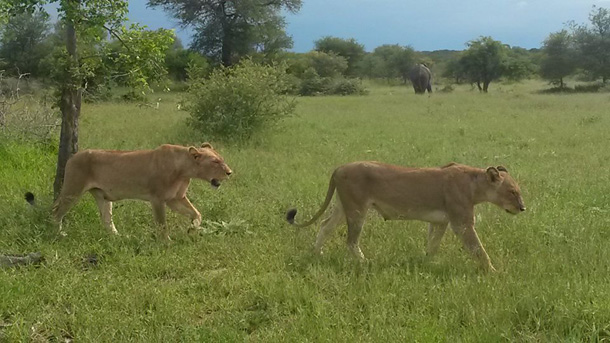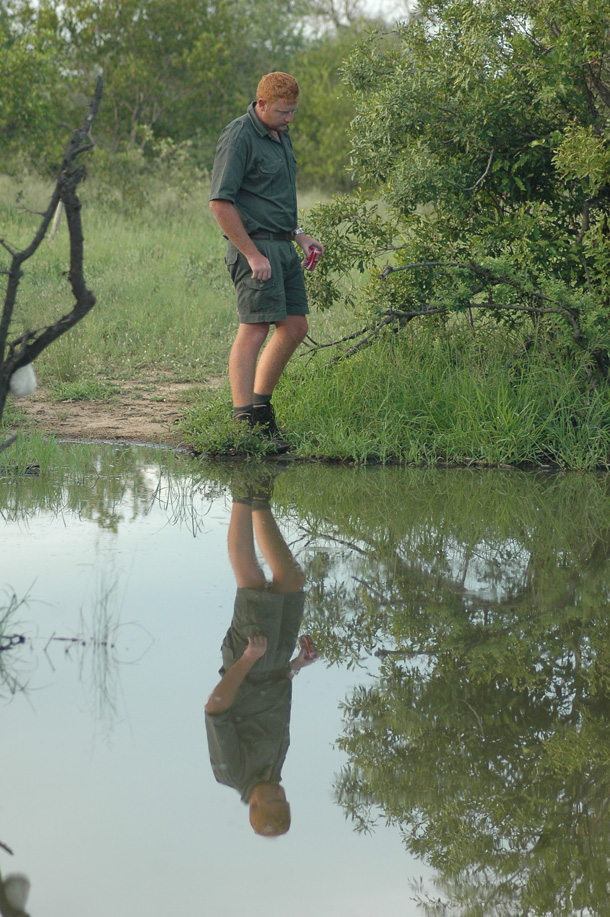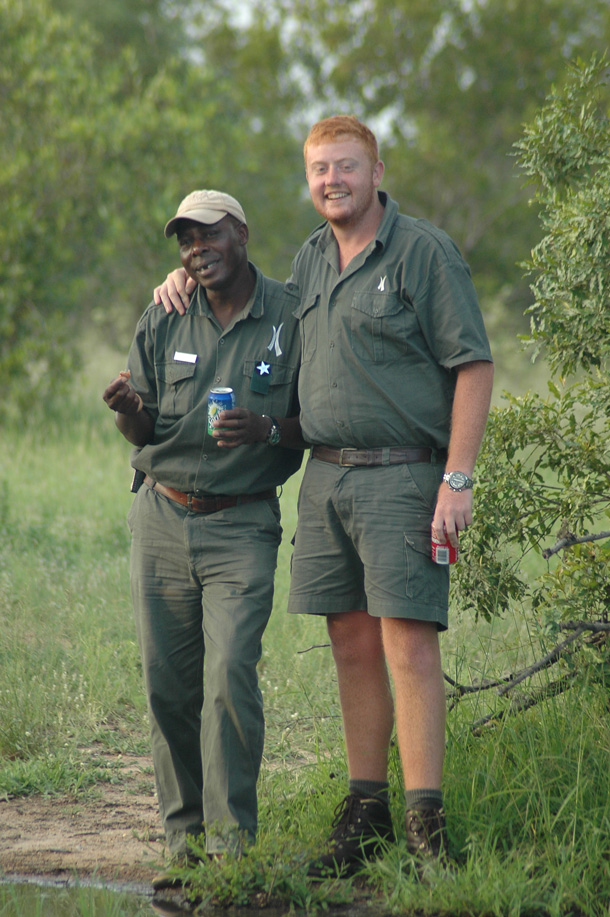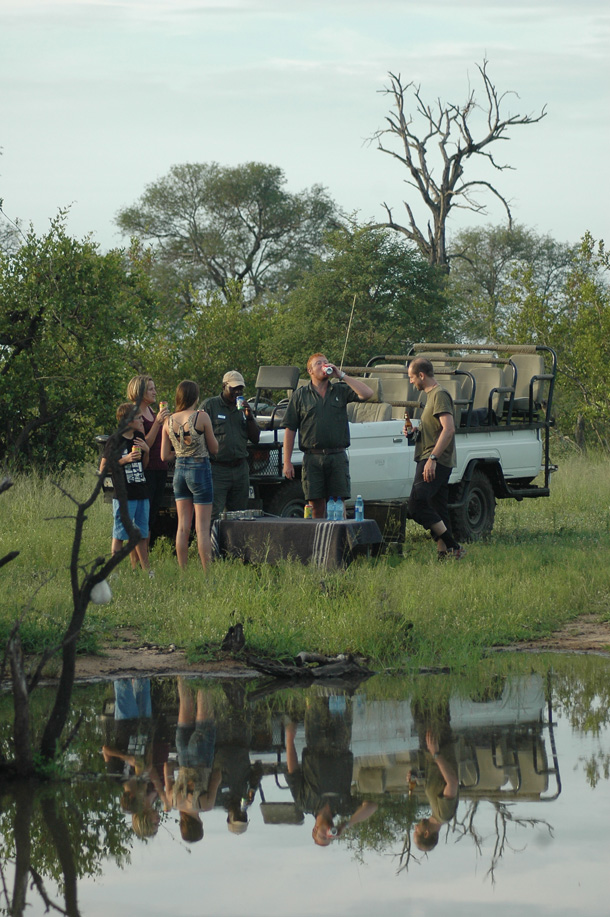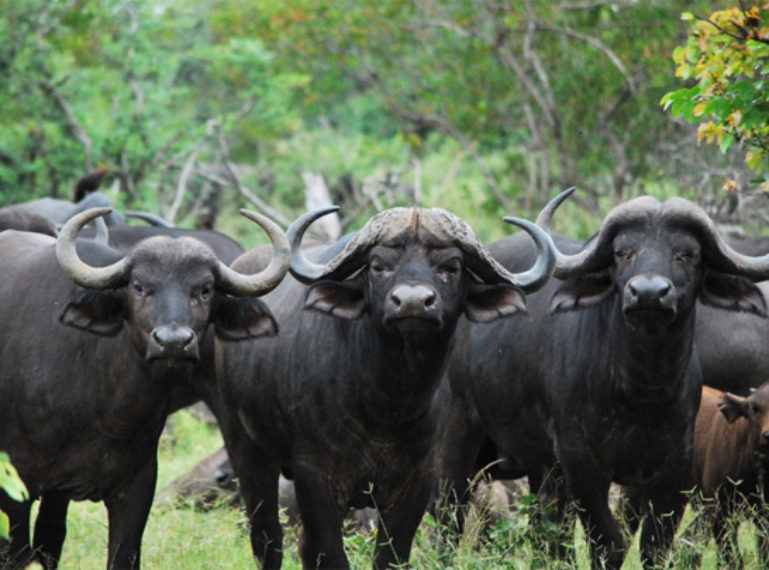
Guest Blogging: Mike and Fiona Clark Leave the Kruger’s Klaserie
This is Mike and Fiona’s final blog from their time at the Klaserie camps in the Kruger. They got to say goodbye to the Ross Pride of lions and had an eventful last few days at camp. Here is the last blog entry from Mike and Fiona:
The last few days were great. Although the weather was a little changeable, we were still lucky enough to see plenty of animals, elephants, giraffe, zebra, kudu, impala and spotted hyena to name a few. We had a fabulous sighting of a white rhino which was quite relaxed – the dominant male of the area. He walked around slowly allowing us to get good photos from every angle, including some close ups with red billed oxpeckers. However our main aim was to find some cats, lions or leopards. There were plenty of tracks from some of the Ross pride; so Isaac tried very hard, tracking through the bush on several game drives to find them, but they were hiding. We caught a glimpse of 2 of the young male lions in the distance at one point.
However on our last drive we had a stroke of luck. The 2 sub adult males were lying in the middle of the road, having just woken up in the early morning. It was great to have finally find them looking so well, and playing in front of us. However the rest of the pride were still elusive. Not far away we also found a large herd of buffalo with their calves – one was only a few minutes old, wobbling close to mum. We left the herd moving towards where the lions were relaxing by the road -you never know, the rest of the pride may appear later for a buffalo dinner.
So sadly we say goodbye to nThambo and Africa on Foot. A big think you to everyone and see you all again in May.
